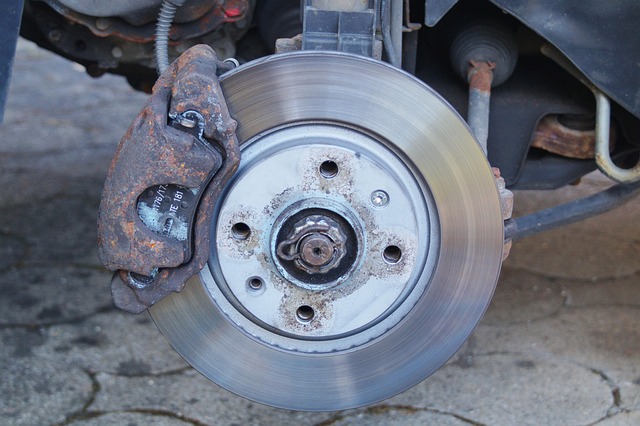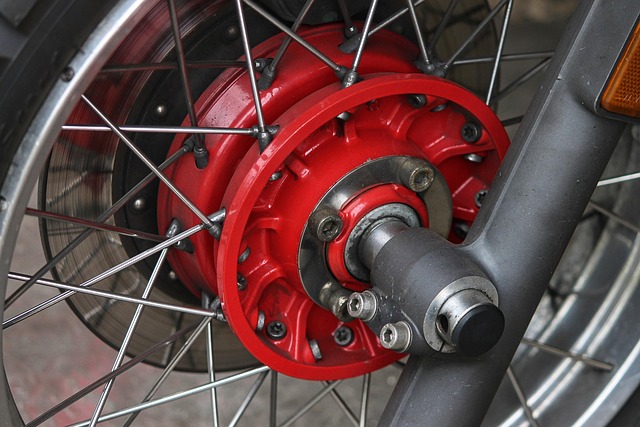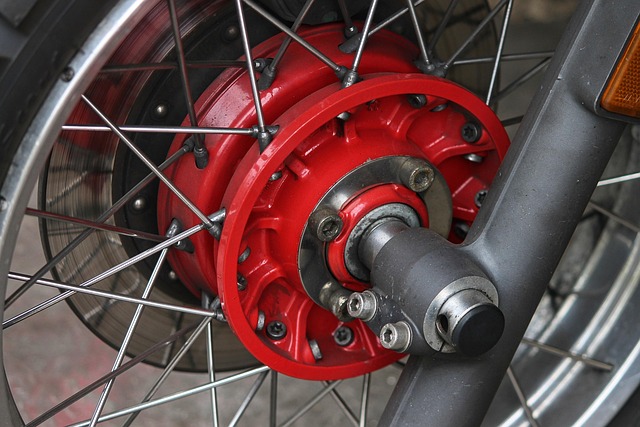Leaky brake lines in vehicles, especially SUVs and commercial trucks (like semi-trucks), pose significant safety risks. Causes include weather damage, corrosive fluids, and physical trauma. Advanced technologies like dynamic brake control systems monitor and optimize braking efficiency. Regular maintenance, including pad wear indicators, prevents severe leaks. Quality Select Brake Systems installation and proper assembly mitigate leak points. Efficient repair requires systematic component examination and understanding modern vehicle dynamics. For heavy-duty vehicles, using genuine replacement parts from reputable manufacturers ensures safety and reliability. Structured maintenance schedules with regular fluid exchanges prevent future leaks, ensuring optimal performance and safety for Select Brake Systems.
Leaky brake lines are more than just a nuisance; they’re a safety hazard. This guide delves into the world of brake system leaks, equipping you with knowledge to identify, diagnose, and prevent them. From understanding the mechanics behind leaky lines to selecting the right components for your vehicle, we cover it all. Learn effective diagnostic methods and preventive measures to keep your brake systems robust and reliable, ensuring a secure driving experience.
- Understanding Leaky Lines in Brake Systems
- Common Causes of Brake Line Leaks
- Diagnosing Leak Sources Effectively
- Selecting Suitable Brake System Components
- Preventive Measures to Stop Future Leaks
Understanding Leaky Lines in Brake Systems

Leaky lines in brake systems are a common issue that can significantly impact vehicle safety and performance. These leaks, often stemming from worn-out or damaged brake lines, can cause reduced braking efficiency, increased stopping distances, and even complete failure of the braking system. This is especially concerning for vehicles like SUVs that require robust, high-performance brake kits to handle their weight and dynamic driving conditions.
Understanding the sources of these leaks is crucial. Over time, brake lines can degrade due to exposure to harsh weather conditions, corrosive fluids, or physical damage. One advanced technology helping to mitigate these issues is dynamic brake control systems, which employ sensors to monitor braking performance in real-time, adjusting pressure for optimized stopping power. Additionally, regular inspection and maintenance, such as break pad wear indicator installation, can help detect potential problems early, preventing more serious leaks and ensuring optimal vehicle control and safety.
Common Causes of Brake Line Leaks

Leaky brake lines are a common issue that can arise due to several factors. One of the primary causes is wear and tear over time, as the fluid-filled pipes age, they may develop cracks or punctures, leading to leaks. This is particularly true for older vehicles or those with high mileage. Another significant factor is improper installation during initial brake system selection or subsequent servicing. Poor quality lines or incorrect assembly can both contribute to potential leak points.
Additionally, environmental conditions play a role; extreme temperatures and road salt can accelerate corrosion, compromising the integrity of the brake lines. In modern vehicles, electric vehicle regenerative braking systems also pose unique challenges, as these advanced mechanisms introduce new potential failure points within the complex network of components. Moreover, commercial vehicle brake servicing requires meticulous attention to detail to avoid leaks, given the high-performance demands placed on their brake systems. Regular brake system inspections can help identify issues early, preventing small leaks from becoming bigger, more costly problems.
Diagnosing Leak Sources Effectively

Identifying the source of a leak is crucial for efficient auto brake repair services near me. The first step in diagnosing leaky lines involves examining the entire braking system, focusing on components like calipers, wheel cylinders, and master cylinders. Mechanics use specialized tools to check for signs of damage, corrosion, or defects that could lead to fluid seepage. By selecting appropriate brake systems based on vehicle specifications, professionals can ensure compatibility and optimal performance during repairs.
Understanding the dynamics of brake safety standards and regulations is key to addressing leaks effectively. Modern vehicles are equipped with advanced dynamic brake control technology designed to enhance braking precision and stability. Mechanics stay updated with these developments to employ the latest repair techniques, ensuring not only effective leak fixes but also compliance with safety guidelines.
Selecting Suitable Brake System Components

When addressing leaky lines or any other issues related to your vehicle’s brake system, selecting the right components is paramount. The first step is understanding your specific needs, especially when it comes to heavy-duty vehicles like semi-trucks. These machines require robust and reliable systems, so opting for high-quality parts is essential. Look for reputable manufacturers that specialize in semi-truck brake maintenance schedule compliance, ensuring every component meets or exceeds industry standards.
One key consideration is the hydraulic brake system, which forms the backbone of your vehicle’s braking capability. Should you encounter any troubleshooting issues, such as persistent leaks, it’s crucial to identify genuine replacement parts from trusted sources. Moreover, exploring a used brake parts marketplace can be beneficial for budget-conscious operators who want to keep their vehicles on the road without compromising safety. This approach allows for cost savings while still accessing reliable components, ensuring your semi-truck remains a force to be reckoned with on the highway.
Preventive Measures to Stop Future Leaks

Regular maintenance is key to preventing future leaks in any vehicle’s brake system, especially for semi-trucks that undergo extensive use. Implementing a consistent check-up routine involves inspecting all components for signs of wear and tear, with special attention to the lines themselves. A qualified mechanic can identify potential issues early on by checking for cracks, corrosion, or damage caused by road debris.
One effective preventive measure is to adhere to a structured maintenance schedule that includes regular fluid exchanges. Using the right brake fluid type and following recommended usage guidelines (as per vehicle brake system design principles) plays a crucial role in maintaining integrity. Additionally, keeping an eye on pressure levels during each service will help detect any anomalies, ensuring optimal performance and safety.
Leaky brake lines are not only a safety hazard but also a sign of an inefficient brake system. By understanding the common causes, effectively diagnosing leak sources, and taking preventive measures, you can ensure your vehicle’s brakes remain reliable. When it comes to selecting brake systems, choosing high-quality components and regular maintenance are key to avoiding future leaks. Remember, a well-maintained brake system is crucial for both performance and safety on the road.
